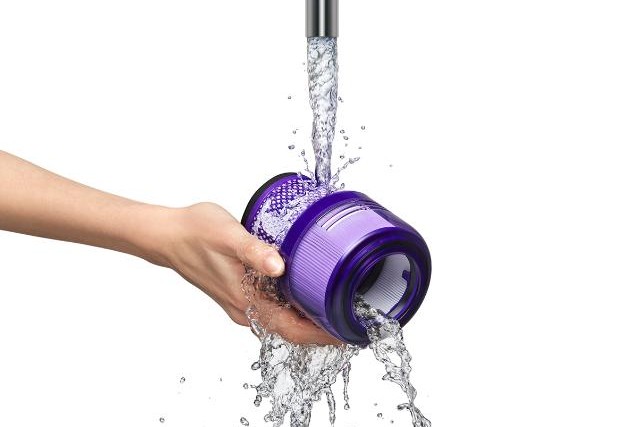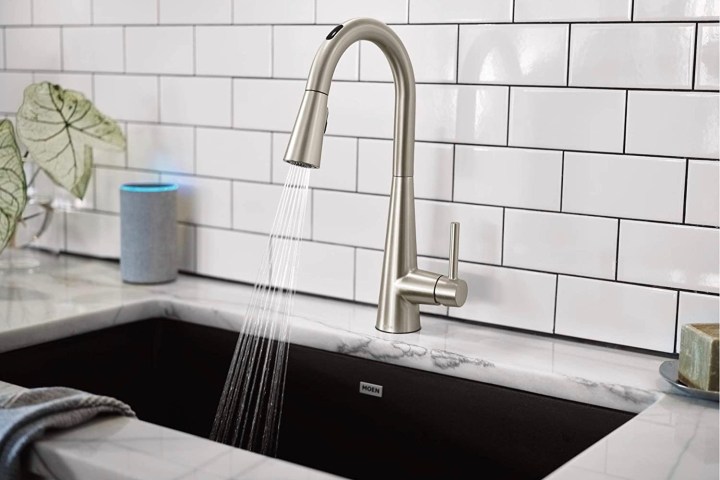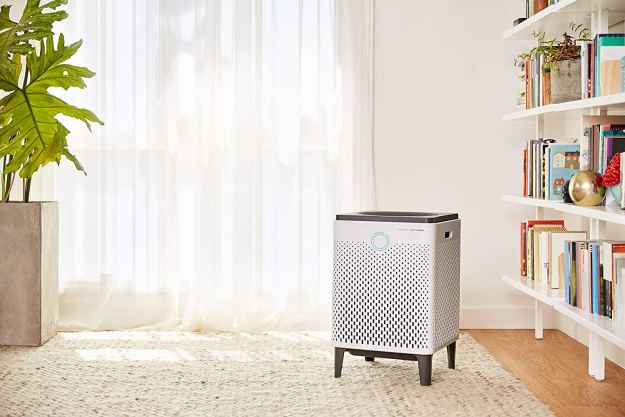Dyson is known for its powerful vacuum motors and dust filtration capabilities. The company’s cordless models, for example, have five different features that, combined, can filter out particles as small as 0.3 microns. However, to maintain that kind of air purification, Dyson vacuums need proper cleaning and maintenance over time. Capturing that much dust means that filters get, well, dusty. At least once a month, you should thoroughly clean your Dyson filter to help keep it effective.
Here’s everything you should know about cleaning those filters properly.
Step 1: Remove your Dyson filter

We’re going to use the average cordless Dyson vacuum as our example. If necessary, disconnect the vacuum from its charger and make sure you turned off everything. While you are probably familiar with removing the bin and emptying it into the trash, filters are typically located on different parts of the vacuum and require different methods for removal.
For cordless and handheld vacs, the filter is usually located on the top or back of the vacuum body, close to the motor or inserted inside it. They tend to have a distinctive ruffled appearance thanks to the dense filter layers. You can typically detach these filters by unscrewing them and lifting them out of the vacuum. Some models may have two filters that both need to be removed.
If your Dyson vac is fairly new and you don’t know where to look, Dyson offers a guide for locating a specific model and provides troubleshooting tips and manuals to get to know the different components.
Step 2: Shake out the dust
Start with a basic dust-off. Hold the filter down over a trash can, and tap it lightly on the side to shake out any loose dust particles and larger debris pieces. Remember to tap gently, and hold the filter well inside the trash can so dust doesn’t billow out.
Step 3: Rinse the filter with cold water

Take the filter to your sink and rinse it under cold tap water. Rub the filter’s fold gently with your hands to encourage any coated dust to wash away.
Don’t use any kind of soaps or detergents for this step. They aren’t necessary and could even cause problems with filter blockages, so it’s best to avoid them.
Step 4: Shake your filter in warm water

The preliminary rinse helped, but your Dyson filter still has a lot of dust trapped inside. To get it out, turn the tap water to warm, and hold your filter upright over it until it’s filled. Now cover the open end of the filter with your palm, and shake it like you’re trying to make some noise.
Dump the water out, and repeat the filling and shaking process until the water dumps out clear. Hold the filter down over the sink, and give it one last shake to remove as much water as possible.
Step 5: Let the filter dry

Set your filter in a dry area with good airflow so the rest of the water can evaporate. All the moisture in the filter needs to be gone before you place it back in the Dyson vac. This typically takes at least 24 hours, and you should always check the filter with your fingers to see if any part feels damp.
Simple sources of drying are fine, like a fan or an open window. But never put the filter by a fireplace, in a dryer, or in a microwave. When it feels completely dry, insert the filter back into the vacuum and screw or latch it into place.
Step 6: Replace your filter as necessary
Dyson filters are durable, but if you have had your Dyson for several years, you may have noticed that the filter is starting to look frayed or worn. There’s nothing wrong with buying a replacement filter from Dyson — just make sure you get the appropriate filter for your model!
Editors' Recommendations
- Best vacuum deals: Cordless to corded, Dyson to Bissell
- The best Dyson vacuums (cordless and upright options)
- Comparison of Dyson Cyclone v8 vs. v10
- 5 best cordless vacuums for hardwood floors
- What are HEPA filters, and can you clean them?




